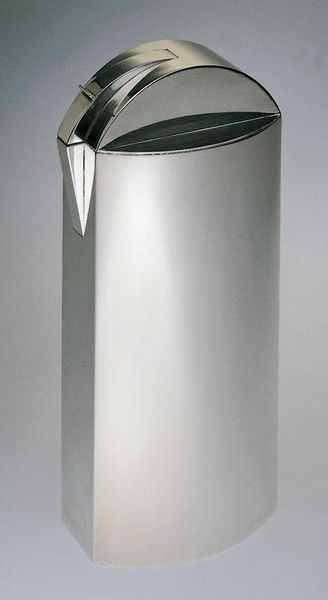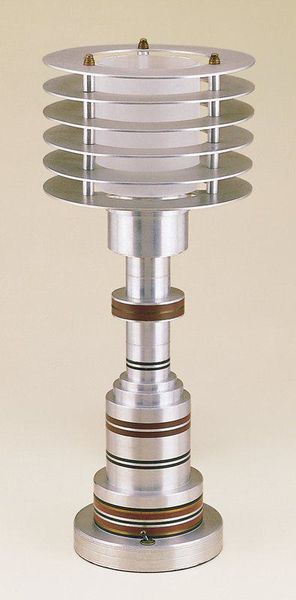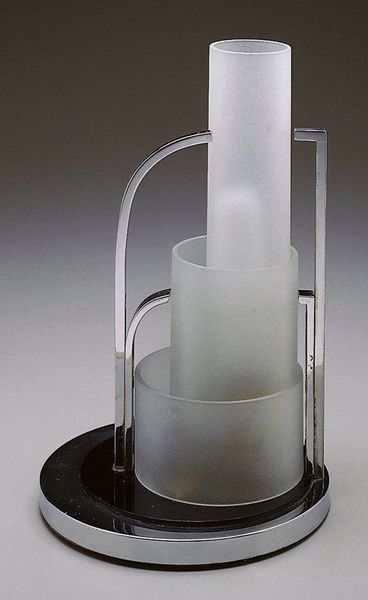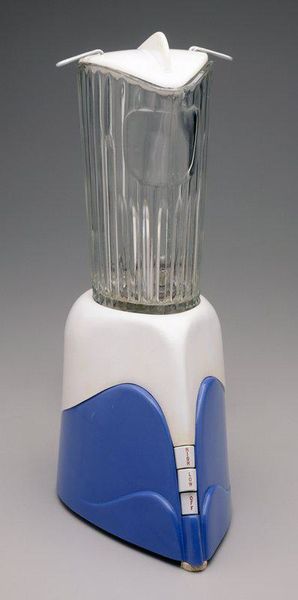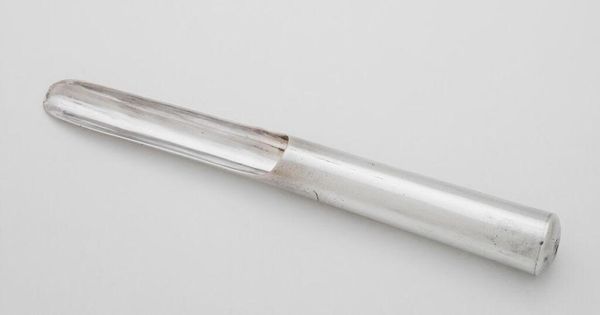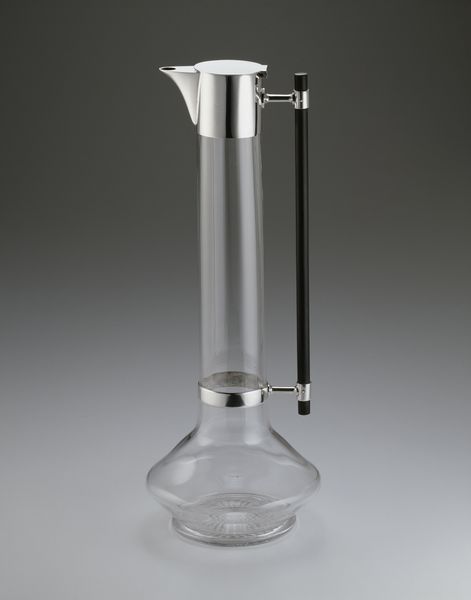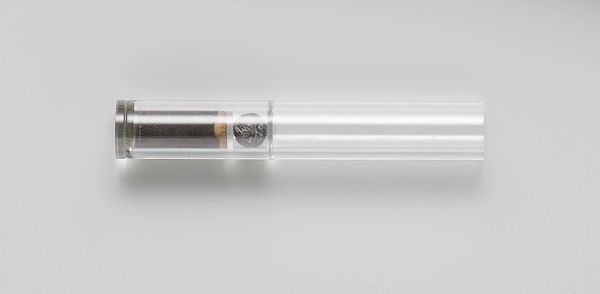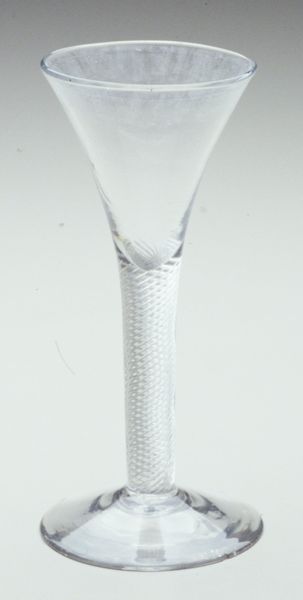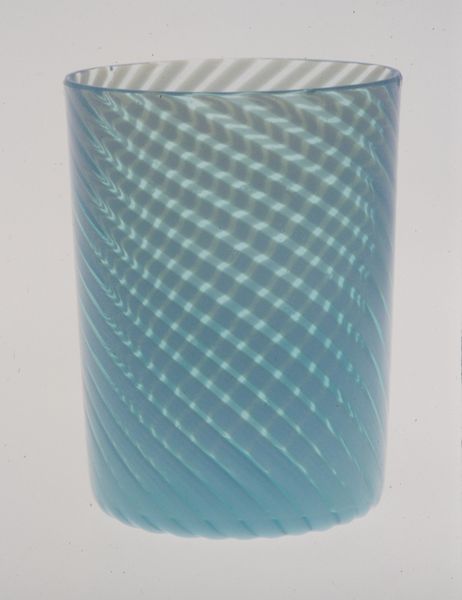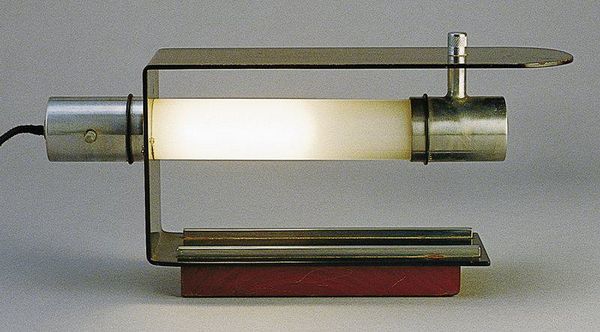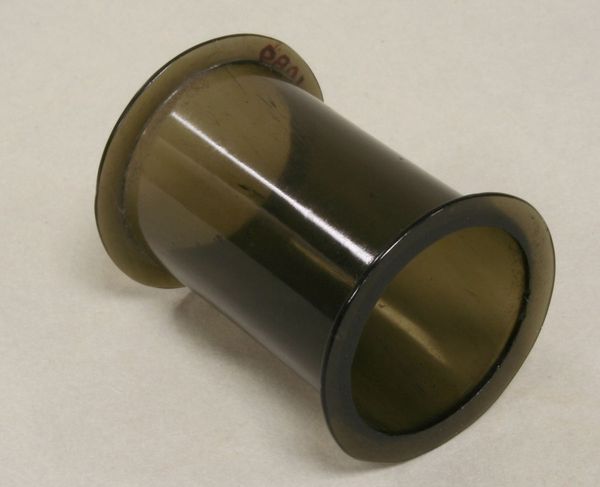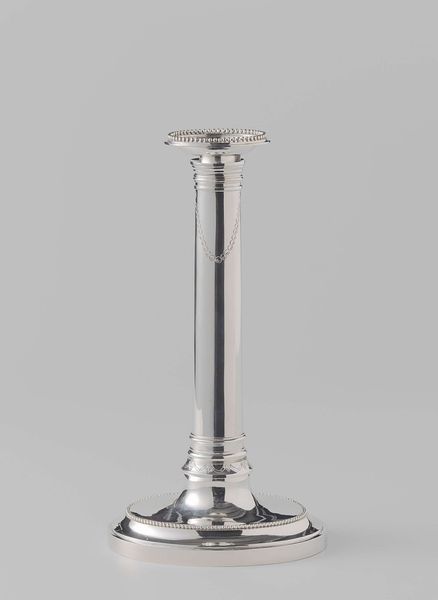
metal, glass
#
art-deco
#
metal
#
glass
#
decorative-art
Dimensions: 11 1/2 x 5 7/8in. (29.2 x 14.9cm)
Copyright: No Copyright - United States
Curator: Welcome. Before us is a table lamp, attributed to Fritz August Breuhaus de Groot, crafted around 1928. It resides here at the Minneapolis Institute of Art. Editor: It looks surprisingly... cheerful? I'm drawn to the gentle, diffused glow suggested by that cylindrical, seafoam-green glass shade. It's a calming presence, oddly futuristic for its time. Curator: Precisely. This lamp epitomizes the Art Deco style. You can appreciate the seamless integration of industrial materials. The glass shade contrasts sharply with the sleek metal, creating a kind of restrained elegance. It hints at mass production but is carefully hand-finished, which you don’t see as much today, really. Editor: Right. The labor involved in polishing that metal base is evident, but it’s fascinating how it also reflects its place in the context of industrial growth. Look at how streamlined and geometric it is, especially the ventilation at the top. This object embraces modernity in a rather pure fashion. Curator: Absolutely. These artists used industrial forms to elevate everyday objects. We consider these materials like glass and metal commonplace. Now the purpose wasn’t to conceal the process of production; it was celebrated! Breuhaus de Groot’s creation does this expertly, almost transforming utilitarian form into something poetic. Editor: A poetic form crafted during rising industry... It’s the marriage of functionality with aspiration; even mundane tasks get a bit of shine with this light illuminating them. Makes me want to pen poetry on the assembly line or find divinity within the steel factory. Curator: I agree! It encapsulates its moment brilliantly. It’s an object, not solely about illumination, but a statement about embracing the machine age’s capabilities—finding grace even amid industrial processes and labor that so many relied upon. Editor: Exactly. Seeing how these movements translate through material shifts our perceptions about our contemporary needs, right? We may never know everything.
Comments
minneapolisinstituteofart almost 2 years ago
⋮
Breuhaus de Groot designed interiors for large modes of transportation, such as trains, ocean liners, and, most famously, the doomed Hindenburg airship that met its fiery demise on May 6, 1937. This lamp would have fit perfectly in the compact travel spaces he typically designed.
Join the conversation
Join millions of artists and users on Artera today and experience the ultimate creative platform.
